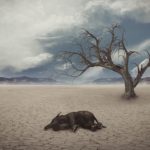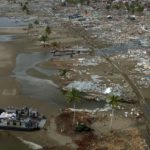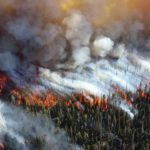
Volcanic eruptions can cause earthquakes, fast floods, mud slides, and rock falls. Lava can travel very far and burn, bury, or damage anything in its path, including people, animals, houses, and trees. The large amount of dust and ash can cause roofs to fall, makes it hard to breathe, and is normally very smelly. The ground around the volcano is not secure and can cause big earthquakes.
The gases and dust particles thrown into the atmosphere during volcanic eruptions have influences on climate. Most of the particles spewed from volcanoes cool the planet by shading incoming solar radiation. The cooling effect can last for months to years depending on the characteristics of the eruption.
Volcanoes have also caused global warming over millions of years during times in Earth’s history when extreme amounts of volcanism occurred, releasing greenhouse gases into the atmosphere.
There are six types of volcanic eruptions: Icelandic, Hawaiian, Strombolian, Vulcanian, Pelean, Plinian. But the most common type of volcanic eruption occurs when magma (the term for lava when it is below the Earth’s surface) is released from a volcanic vent. Eruptions can be effusive, where lava flows like a thick, sticky liquid, or explosive, where fragmented lava explodes out of a vent. In explosive eruptions, the fragmented rock may be accompanied by ash and gases; in effusive eruptions, degassing is common but ash is usually not.
Volcanoes emit a variety of products which may be harmful to human and animal health. Some cause traumatic injury or death and others may trigger diseases, particularly in the respiratory and cardiovascular systems, or mental health problems. The impact on health is related to the style of eruption and type of volcano. Effusive eruptions tend to emit gases and aerosols, which may damage the respiratory system, and lava flows which rarely kill but may cause thermal injuries and mental stress due to the threat of loss of property. Explosive eruptions kill, injure and potentially trigger disease via a multitude of hazards ranging from proximal impacts related to production of fragmented rock and more distal impacts from ash, gas and secondary effects.
Charity Support team considers volcano eruption as a big problem on human safety and health aspect.
What can we do to manage victim protection of volcano eruption?
- Charity Support scientists are making a strong impact to make a scientific research about volcano eruption prediction. By monitoring the movement of tectonic plates and changes in the surface of the volcano scientists can predict the likelihood of a volcanic eruption and forecast which areas should be prepared for one. Predicting when a volcano is at risk of eruption allows time for evacuation plans to be initiated. But prediction system and technology should be developed. Our scientists are doing the best to find the best solutions and present them in the results of research.
- The second important aspect is the protection plan for human lives and homes living in danger zones. Protection is one of the most challenging aspects of reducing the risks of a volcanic eruption. Lava flows, lahars and ash fallout cannot be protected against. As the result of this evacuation is the only real way of reducing the risks associated with volcanic eruptions. That is why our researchers are searching for the best ways and strategy how to make an effective protection program with concrete plan and predictable results!
- Third – most important part of this program is the evacuation plan on which our scientists are working very hard. One of the most effective ways of reducing the risk of a volcanic eruption is having an evacuation plan. This involves ensuring evacuation strategies are in place along with emergency shelter and food supplies being planned for. The plan is to make a unified and supportive strategy for danger zones for this evacuation plan to work effectively. Local people can also be educated about actions they can take to reduce the risk of loss of life or injury. People are taught that if they are unable to be evacuated what they should do to protect themselves e.g. go indoors to avoid falling ash and rock.
Your donation is very necessary and will support our research and human lives in the future!
Thank you for understanding and your concerns about volcanic eruption victims protection!



